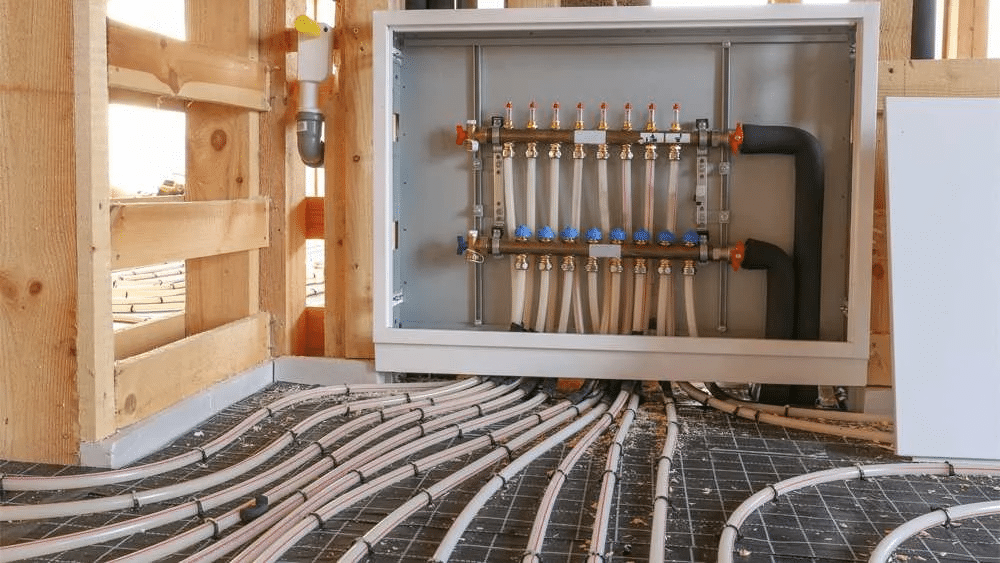When winter rolls around, there’s nothing better than walking into a home that feels warm, cozy, and totally inviting—without the shock of a sky-high energy bill. That’s exactly where a hydronic heating system steps in. It’s not just another way to heat your home—it’s an energy-efficient, whisper-quiet, and ultra-comfortable upgrade that ditches dry air and noisy vents for good.
But what is hydronic heat, really? And how does a hydronic boiler heat water to keep your rooms toasty from floor to ceiling?
Whether you’re planning a home upgrade, building from scratch, or just curious about smarter ways to heat your space, this guide will give you the warm (and clear) breakdown—no jargon, no fluff. Let’s get into it.
What Is a Hydronic Heating System?
Let’s break it down simply: a hydronic heating system uses hot water—not hot air—to heat your home. Sounds fancy, but the concept is beautifully simple and super efficient.
Here’s how it works
Your hydronic boiler heats water, and then that heated water travels through a network of pipes—either under your floors, inside your walls, or into sleek baseboard heaters. As the hot water flows, it gently radiates heat into each room, creating a cozy and consistent warmth.
Still wrapping your head around it? Here’s the gist in bullet points:
- 🔥 Water, Not Air: Instead of blowing heated air like a furnace, it circulates heated water through pipes.
- 🛁 Boiler-Powered: A boiler heats the water to the desired temperature and keeps it moving throughout your home.
- 🚿 Radiant Heat: That warmth radiates through your floors, walls, or baseboards, creating a soft, even heat.
- 🔇 Quiet Comfort: No rattling vents or loud fans—just silent, soothing heat.
- 🧼 Cleaner Air: Because it doesn’t push air (and dust) around, it’s a great choice for people with allergies or asthma.
Compared to forced air heating systems, which can leave your skin dry and stir up allergens, hydronic systems are the gold standard for comfort, cleanliness, and calm. It’s the kind of heat you feel, not hear.
💧 How Does a Hydronic Boiler Heat Water?
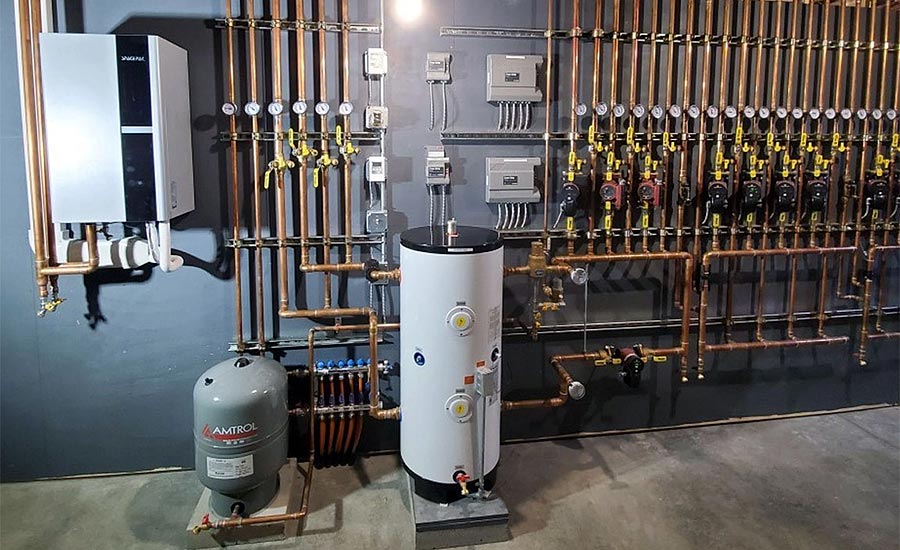
Credit: ahouseinthehills.com
At the heart of the system is a boiler—a powerhouse that heats water quickly and efficiently. Here’s how it works:
- The boiler uses gas or electricity to warm up water
- The hot water is pushed through sealed hydronic piping
- That water travels to the radiant flooring, radiators, or baseboards
- As the water cools, it returns to the boiler to be reheated
This cycle repeats quietly and efficiently, keeping your entire space at just the right temperature.
So, if you’ve been wondering, how does a hydronic boiler heat water—there’s your answer. It’s a loop of toasty comfort.
Insights into a Hydronic Heater
A hydronic heater is any unit that uses hot water to warm the air around it. Think of it as a modern upgrade from those clunky electric heaters. Some common types of hydronic heaters include:
- Radiant floor heaters: Pipes installed under your floor
- Baseboard units: Slim, space-saving heaters near the floor
- Wall radiators: Sleek and stylish, ideal for modern homes
Each type of hydronic heating quietly delivers heat to the space without creating noise or blowing allergens into the indoor air.
Types of Hydronic Heating Systems
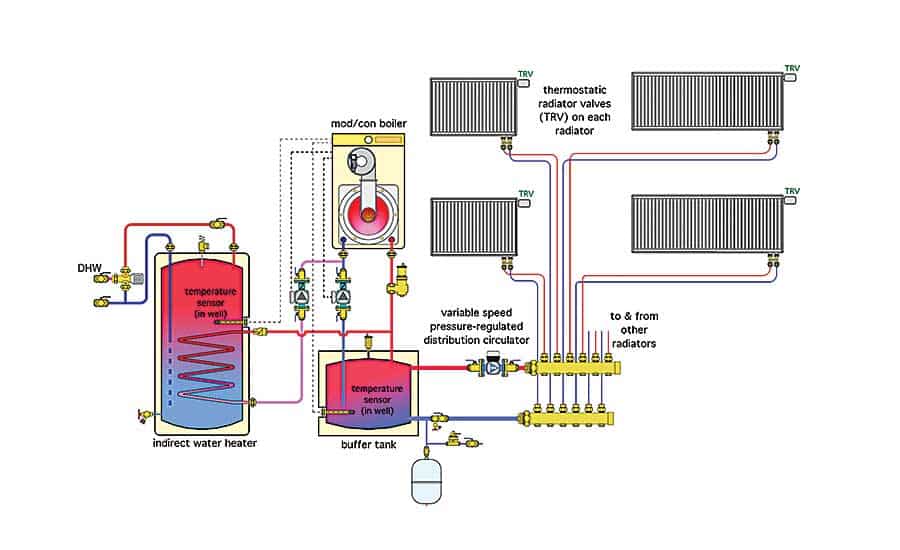
Credit: supplyht.com
You’ve got options. There are several types of hydronic heating systems depending on your home size, budget, and preferences:
1. Radiant Floor Heating
This is luxury-level comfort. Tubing runs under your flooring (tile, hardwood, or even carpet), giving off gentle, even heat. It’s perfect for bathrooms and bedrooms.
2. Hydronic Baseboard Heaters
These are classic. Long, low-profile units sit along the bottom of your walls and radiate heat as warm water passes through them. They’re energy-efficient and don’t take up much space.
3. Hydronic Radiators
Stylish and efficient. Wall-mounted or free-standing units that heat quickly and cool slowly. Great for rooms that need fast heat distribution.
4. Combination Systems
Some homes use a mix of radiant floors, baseboards, and radiators. This ensures even heating or cooling across the house.
Each type of heating system using hydronic energy is versatile and more energy efficient than traditional options.
Hydronic vs Forced Air Heating: What’s the Difference?
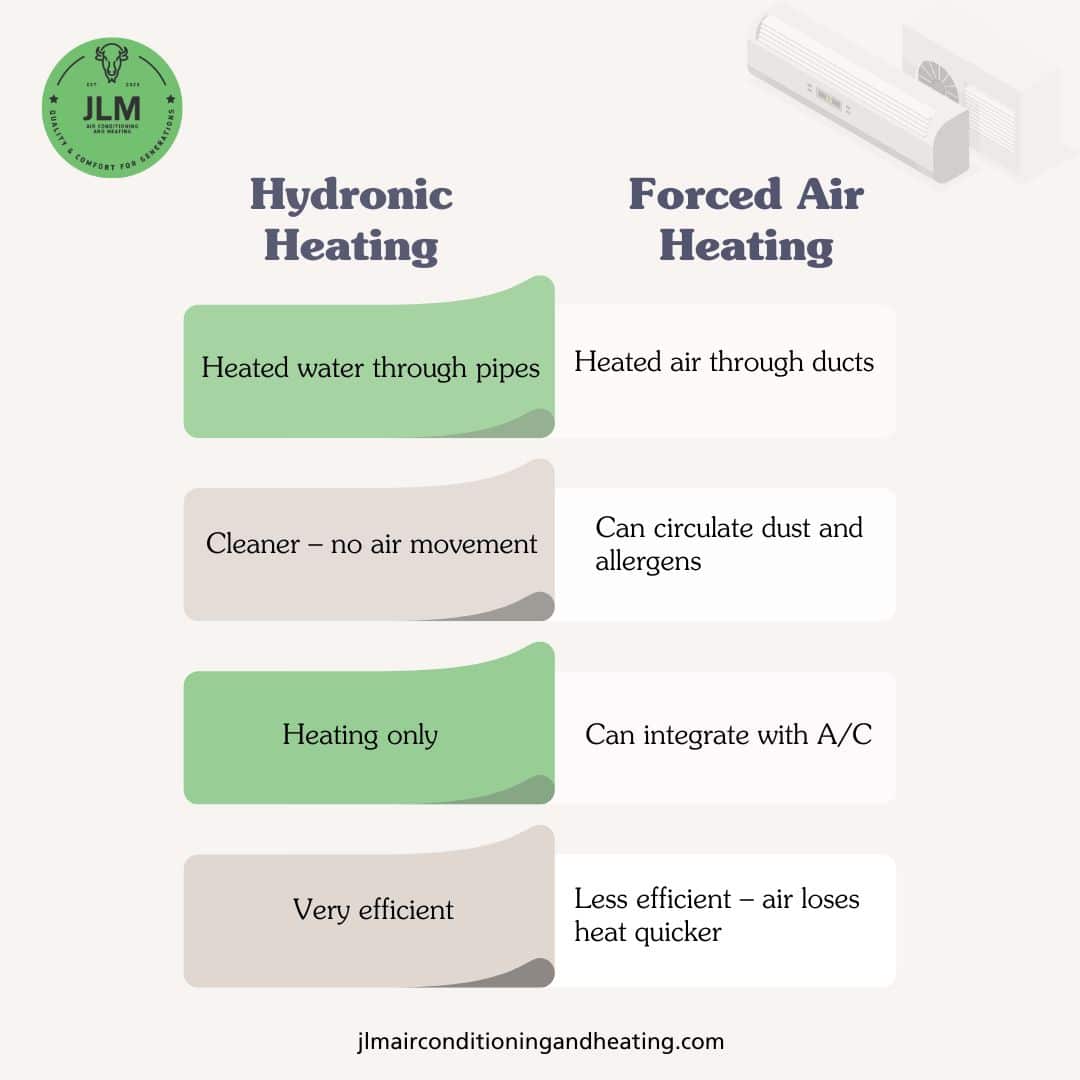
When it comes to keeping your home warm, there are two major players in the game: hydronic heating and forced air heating. Both get the job done—but how they do it (and how it feels) can make a big difference in your comfort, air quality, and even energy bills.
Let’s break it down.
What Is Hydronic Heating?
As we mentioned earlier, hydronic systems heat your home by pumping hot water through pipes, delivering radiant warmth through the floors, walls, or baseboard units.
Key Benefits
- Even, consistent heat – No hot or cold spots.
- Silent operation – No fans, no blowing air.
- Cleaner indoor air – No dust or allergens getting pushed around.
- Energy efficient – Water retains heat better than air.
What Is Forced Air Heating?
Forced air systems are the most common in North America. They use a furnace to heat air, then blow that air through ductwork and vents into your rooms.
Key Benefits
- Quick to heat – Warms up rooms faster than water-based systems.
- One system, multiple uses – Can double as an AC system in summer.
- Lower upfront cost – Generally cheaper to install, especially in newer homes.
Which One Is Better for You?
It depends on your priorities:
- Want quiet, cozy, allergy-friendly warmth? Go hydronic.
- Need a system that also cools your home and heats it fast? Forced air might be the way to go.
But if you’re building a new home or planning a serious upgrade, a hydronic system is worth considering. It’s a long-term investment in comfort, efficiency, and indoor air quality.
Ready to explore your options? JL M Air Conditioning and Heating is here to help you figure out which system fits your lifestyle best—and install it like pros.
💡 Benefits of a Hydronic System
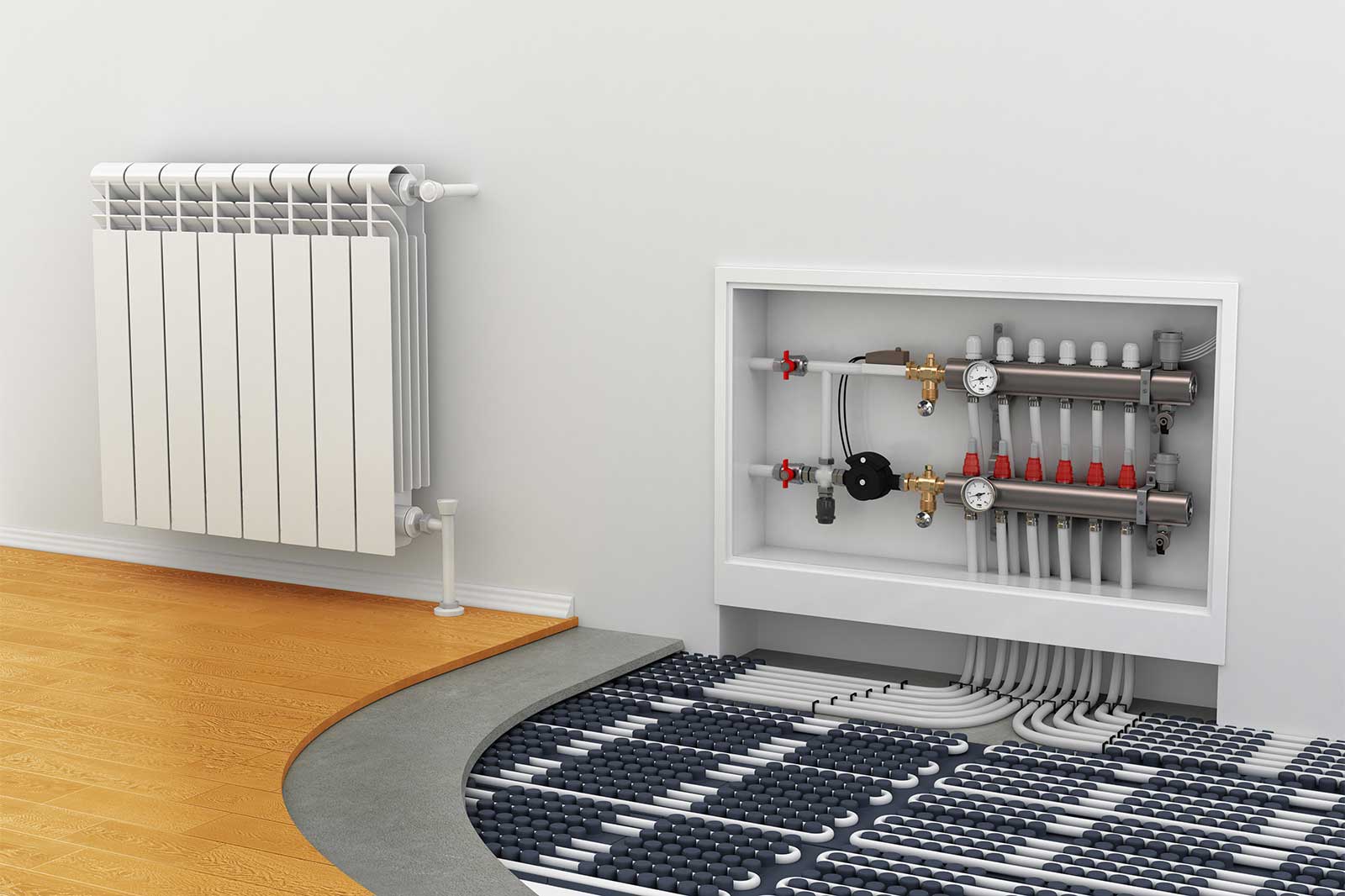
Credit: bluevalleyheatingcooling.com
Still wondering if it’s right for you? Here’s why people love hydronic systems:
✅ Energy efficient = lower bills
✅ Even heat from floor to ceiling
✅ Great for allergy sufferers
✅ Works quietly in the background
✅ Compatible with zones—heat only the rooms you use
✅ Adds value to your home
It’s not just about staying warm. It’s about comfort that feels better.
🔧 What About Maintenance?
Good news—hydronic heating systems are low-maintenance. But like all home systems, they do need some attention:
- Check your boiler regularly
- Look out for water leaks
- Get annual inspections from a pro
- Bleed air from radiators if they feel cold
- Ensure the heat exchanger stays clean
Routine care extends your system’s life and keeps everything working like a dream.
🌍 Eco-Friendly and Energy Efficient
One of the biggest perks of hydronic energy? It’s green. Since water holds heat better than air, you use less energy to get the same level of comfort. That’s why so many eco-conscious homeowners choose this system.
If you combine hydronic heating with solar panels or a heat pump, you can reduce your carbon footprint even more.
🛠️ What If Something Goes Wrong?
From a boiler that won’t ignite to cold spots in the house, issues can pop up. But don’t stress.
That’s where JLM Air Conditioning and Heating steps in. Whether you’re installing a brand new hydronic heating system, replacing your water heater, or figuring out how to fit hydronic piping into a remodel—we’ve got you covered.
Our team brings years of experience, fast response times, and friendly service to every project. Need help choosing between forced air or hydronic systems? Just ask. We’re here to guide you through it.
So if you ever wonder what type of hydronic heating is best, or how to upgrade your heating or cooling setup—JLM is always just a call away.
The Bottom Line
As we sum up, you don’t have to settle for loud vents, uneven heat, or sky-high energy bills anymore. Hydronic heating is the upgrade your home’s been waiting for—quiet, consistent, and incredibly comfortable.
✅ No more dry air
✅ No more dusty ducts
✅ Just clean, efficient warmth that wraps around every corner of your home
Still wondering what exactly a hydronic baseboard heater is, or how radiant floors get installed? You’re not alone—and you don’t have to figure it out solo. JL M Air Conditioning and Heating has your back every step of the way—from answering your questions to repairing your boiler or installing a brand-new, energy-saving system. So why wait? Warm up the smart way.
Hydronic is the future—and we’re here to bring that comfort home to you.
Smarter heat. Cleaner air. Cozy starts here.

